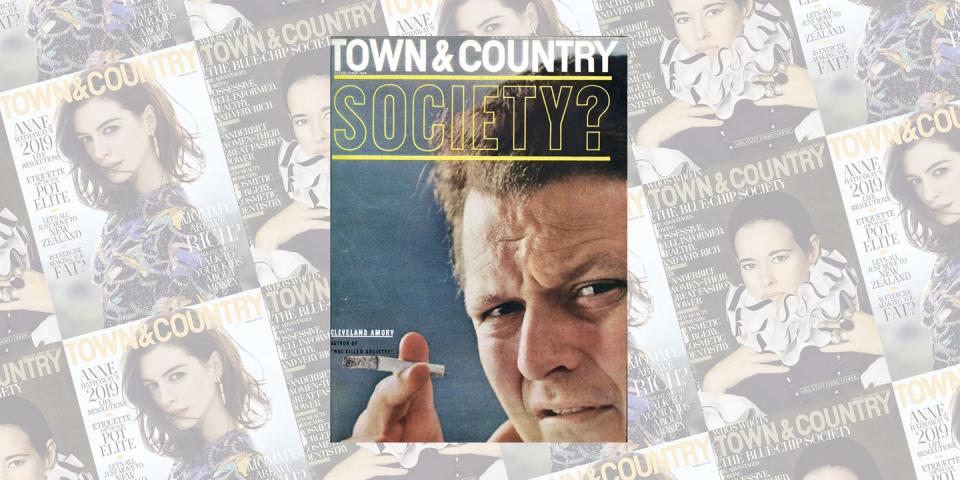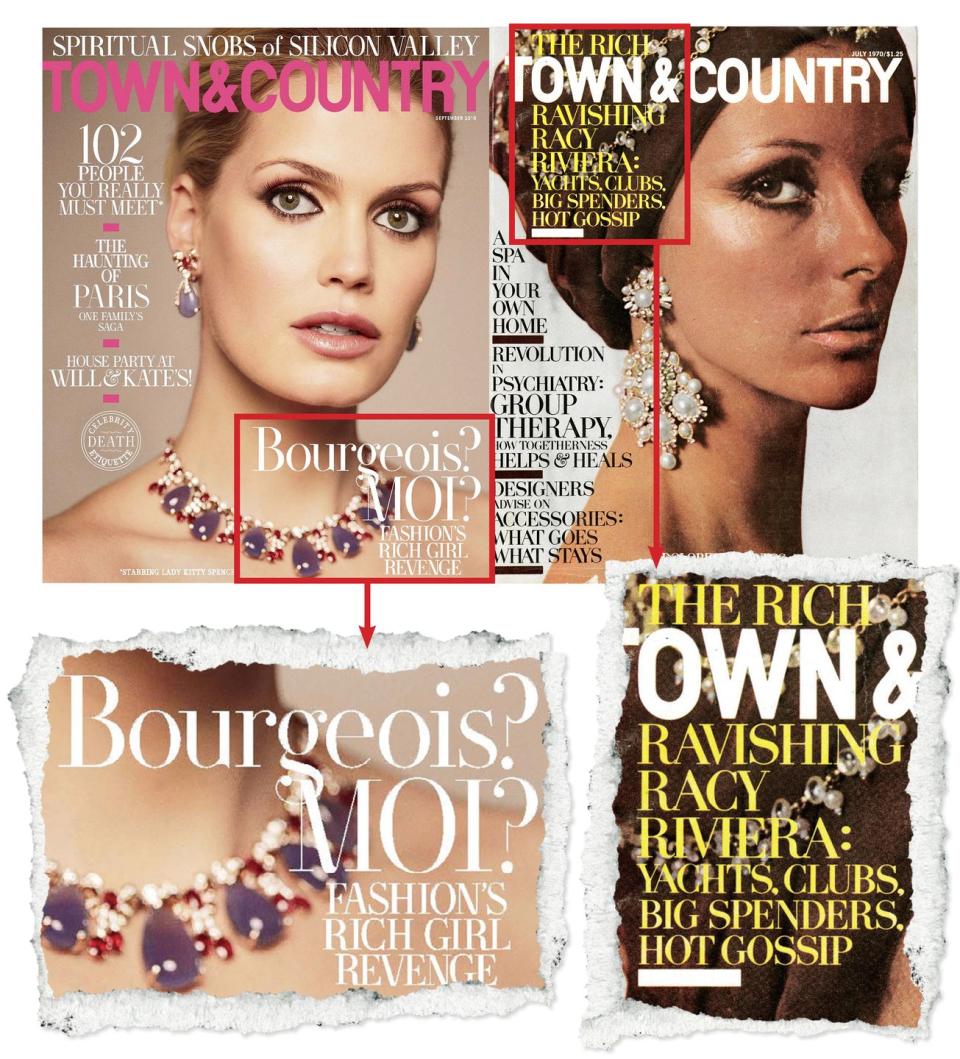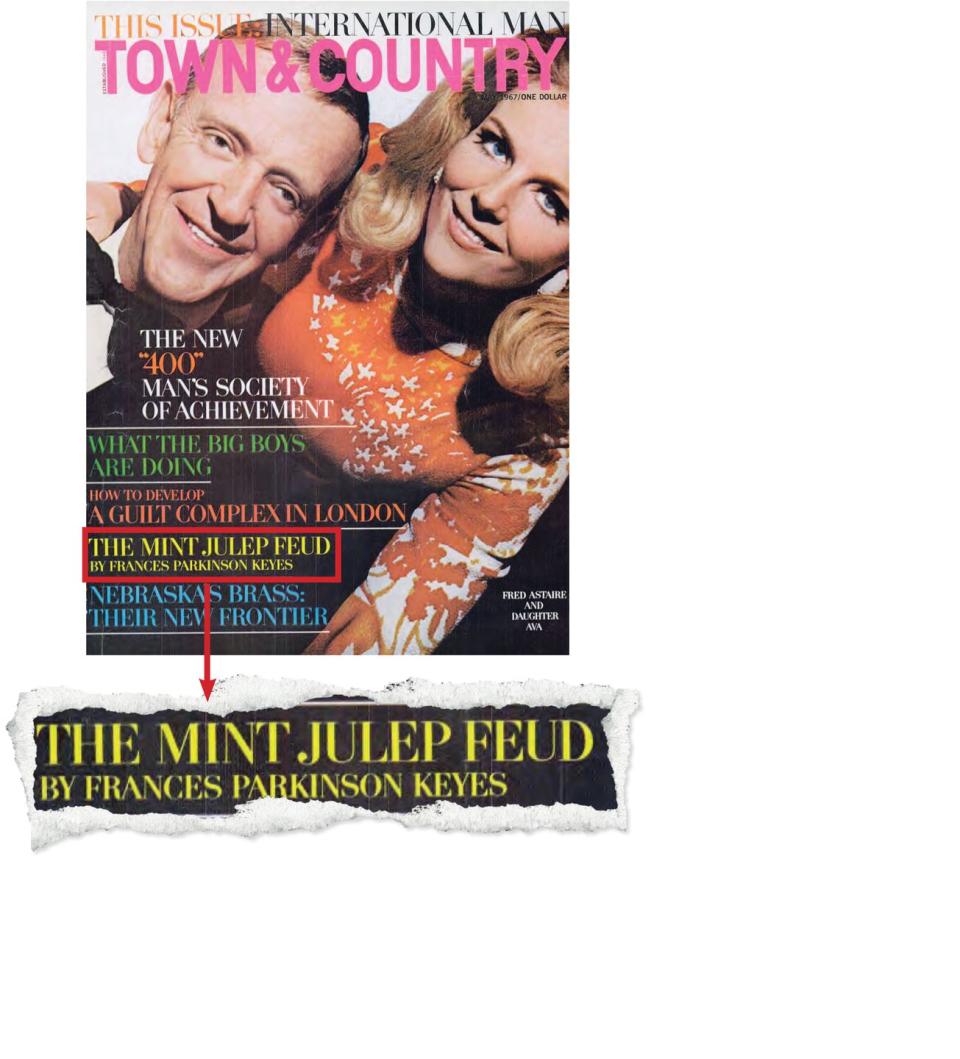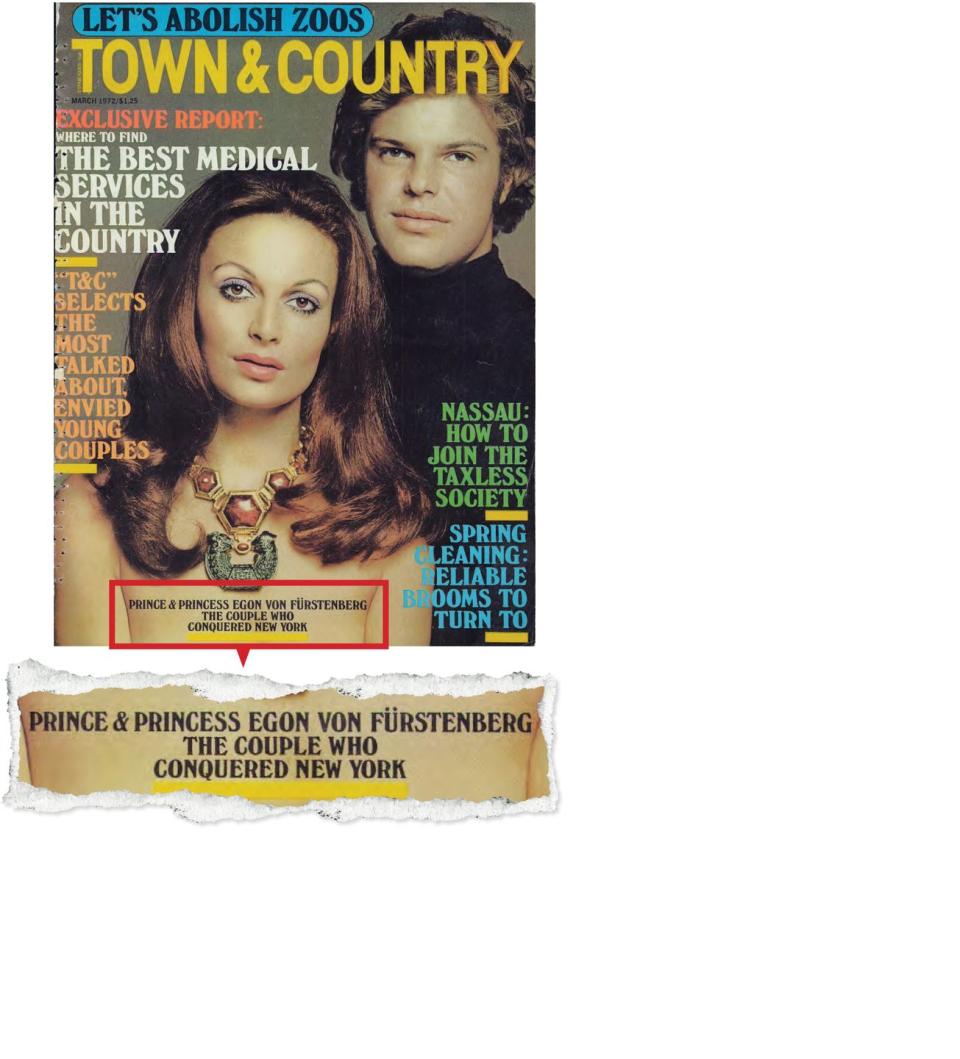How to Write a Town & Country Coverline

“How do you come up with them?” It’s the question we are asked most often when T&C editors are out in the wild. Invariably followed by some version of, “Do you all spike the water cooler?” “Do you focus-group them at Sant Ambroeus?” “Could I slide into your DMs with my ideas?”
The subject at hand is our coverlines. Scan this month’s cover, and ask yourself the question once posed by the Cut: “What Town & Country Headline Are You?” Chances are you’ll find one that speaks directly to you. In the issue in question, February 2019, with Anne Hathaway on the cover, I was an “Etiquette for the New Pot Elite” with “Is Exercise Making You Fat?” rising.

“Coverlines are the original clickbait,” says T&C editor in chief Stellene Volandes, who writes many of the most meme-able lines, including that issue’s “Mommy, Are We Rich?” “It’s about seducing the reader into buying the magazine and the subscriber into taking off the plastic, sitting down with it, and reading it cover to cover.”
Fans of T&C’s coverlines know that these turns of phrase, usually between four and seven words, are amuse-bouches signaling the feast ahead. “I like to think of coverlines as great accessories that make the outfit,” says Stella Bugbee, the editor of the Cut back in 2019 and now of the New York Times Styles section. (She was partial to “Let’s All Move to New Zealand,” by the way.) “They set the mood. They are the lighting that tells you what kind of room you are about to enter.”
These bons mots are, increasingly, a rarity. While you’re viewing this month’s cover, examine the rest of the newsstand. You’ll see precious few lines of text, and if you do see any they’re likely to be empty platitudes, celebrity name-checks, or solicitations to Buy! These! 14! Life-Changing Lipsticks! Where’s the fun? To quote ourselves, “Remember fun?”
The history of the coverline is as rich as that of magazines. The famous poster of Uncle Sam wagging his finger can be traced back to an image that appeared on the cover of Leslie’s Illustrated Weekly Newspaper in 1917, according to the periodicals collector Steven Lomazow. The accompanying exclamation, “I Want You,” was a proto-coverline.

As with many magazines a century ago, T&C put a premium on cover portraiture rather than text—a 1900 edition featured Mark Twain in profile, “drawn from life.” The style that we know today creeped in during the 1950s (“Parties! Parties! Parties!” trilled our December 1959 issue, above a picture of Dina Merrill and Cary Grant), and by the mid-’60s it had hit its stride (“Beauty and the Beach” winked the January 1965 issue, featuring the Duke of Windsor). By the 1980s the secret sauce perfected by the late, great T&C editor Frank Zachary—striking photography and art direction topped with a soupçon of wit and arsenic—was being imitated by competitors across the publishing landscape, including one up-and-coming Brit.
“Coverlines are a critical weapon, almost more important than the image,” says Tina Brown, the former editor in chief of Vanity Fair and the New Yorker. She developed her appreciation for headline writing by reading the British tabloids, and she has a soft spot for the forgotten 1970s glossy Nova, which once declared, “Self-Indulgence Is Never Being Able to Say I Can’t Afford It.” “You have to use a line that pricks immediate curiosity or even disagreement or outrage.”
T&C’s coverlines now usually start with a query dissected by the Sopranos of Wordplay: Volandes, deputy editor Danielle Stein Chizzik, arts editor Adam Rathe, and yours truly. While parsing a story about elite pet schools in our Satriale’s (the 27th-floor conference room at the Hearst Tower), I asked, “What’s the toughest workout now?” “A bootcamp?” said Stein Chizzik. “Bootcamp for Bichons!” barked Rathe. “OMG. That’s it!” Volandes said. Bada-bing! A September 2021 coverline was born.

“The process here is more collaborative than at other magazines. The bouncing around of ideas is how coverlines get to be really good,” says flinty copy chief and consigliere James Lochart, who apprenticed for the role at Brown’s Talk. “He assesses if a line actually translates to a population larger than four geniuses in a room,” Stein Chizzik adds. If Lochart laughs, we’re usually off to a good start. “I imagine it’s like the Iowa Writers Workshop but with more frequent use of the word vendetta,” says Rathe. Secrets, snob, gossip, and feud also figure prominently, as does helpful advice to counterbalance all the snark: “Foie Gras Outlaws: What the Rich Love to Hide” (March 2020).
The past two years have presented a challenge in terms of tone as well as production. Email, texting, Slack, and Zoom turned into a running party line where we came back, albeit remotely, to T&C’s inaugural mission statement, which has served us well through national triumphs and crises: We are at the service of readers, to “instruct, refine, and amuse” them with world class storytelling. Ultimately, coverlines are just window dressing for the goods inside; they wouldn’t hold up to scrutiny if the writing in our pages didn’t justify them. Consider the alternative. “Bad coverlines water down the product as much as bad content,” Stein Chizzik says. “It’s weak sauce.”
There’s an unspoken lesson here, and that is that resonant coverlines respect the audience. They assume people will read between the lines, get the shorthand, appreciate the inside joke—just check out the spine of every issue. We talk to readers the way we talk to our friends. It’s perhaps that trust that’s the secret to a bond now approaching two centuries old. Here’s to another 175 years!
This story appears in the October 2021 issue of Town & Country.
You Might Also Like

